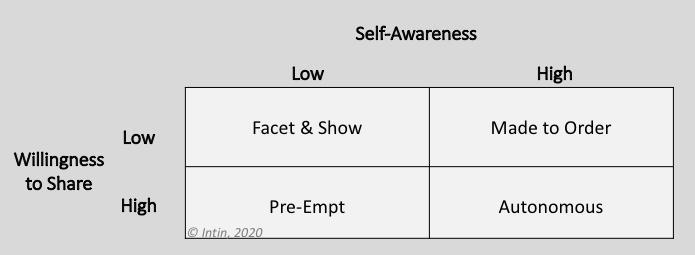Write Ups
Your entry door to the world of efficiency and accountability (ROI) Welcome to your first step to become an ROI specialist and finally prove sales and marketing’s worth in real economic terms in a credible way.
Selling to the Connected Consumer

Continuously Connect Consumption
In the large, inter-connected world there are digital haves and digital have-nots. This article is about the digital haves, tectonically increasing post the COVID-19 reset. Internet consumption is a continuum for content, goods and services ruled by time availability more than access. Ordering on internet and consuming content are actions decided by personal choice or gadget fatigue. Just a decade back, life happened in discreet packets based on physical environment access; when in market – shop or when in front of Television – watch ads and content. On the other hand, the AWATAD (anywhere, anytime, any device) consumer can do anything 24×7, as a function of only one resource; time. It is the (non) availability of time that decides when (s)he will shop, watch ads, get entertained. We are all emperors of our wishes and slaves of time. CEOs have an urgent and important need to re-orient heir enterprise to this continuous, connected, consumer.
TWO DIMENSIONS OF CONTINUOUS CONSUMER
Consumer segmentation has been a critical function for a brand to define its market and competition. Hence, brands work very hard to profile their consumers. For the continuous consumer, there are two new dimensions within one big internet marketplace; as AWATAD consumers transact with AWATAD brands and vice-versa.
The first is self-awareness. In the old discreet world, self-awareness has a religious or philosophical connotation. Not in the continuous connected world. Here, it is about being aware of right search string or the parameters, which define what you are looking for. Why? It is because in a discreet, physical experience there is always a sales person to help, assist and guide. But the continuous life is completely do it yourself; the consumer has a huge ability to sift and search through millions of choices at the press of a button as long as the consumer knows exactly what (s)he is searching for.
The second dimension is willingness to share. This is analogous to sharing your personal choices with the friendly sales person who then suggest the best drink (or dress) for you. Abundance of digital identity thefts and associated risks have created this dimension, where consumers are apprehensive of sharing information on the internet, where their digital footprints cannot be erased. On the other end of this dimension are consumers who are die-hard fans of crowd sourcing everything from creativity to intelligence to recommendations.
THE FOUR SEGMENTS
1. Low Self Awareness, Low Willingness to Share:
Consumers who are not too aware of what all they are looking for and are also hesitant in sharing their personal data or replying to brand queries.
2. High Self Awareness, Low Willingness to Share:
Consumers who are absolutely clear of what they need and are also opening to sharing their data and/or choices with business.
3. Low Self Awareness, High Willingness to share:
Consumers who are not clear of what they want and are open to sharing their data and/or choices with business.
4. High Self Awareness, High Willingness to share:
Consumers who are very clear of what they want and also willing to share as much information as possible with business.
FOUR CONTENT’N’CLICK SALE HOOKS
In the continuous world, sale hooks are all about content-n-click. Brand has to provide content (advertising) at the place of transaction. For high involvement categories, consumers usually recheck brand content (advertising) at the time of transaction. This has been different in the traditional world, where as brand advertises on third party broadcasting media while transaction happens in shops. For continuous consumers, they not only consume but also become brand promoters (free influencers) by sharing their consumption with their community i.e. consumers like their own selves. Hence, each content should have a clickable buy and each click should be linked to marketing content.

For segment 1, business relies on its own historical data or access to category data. This is because brand handholds the consumer by telling that other buyers of product A, also bought product B. All this uses sales connects as consumer is unwilling to share any data.
However, in segment 2, the consumer are aware of what they want, hence they literary dictate what they want and expect the brand to deliver customized product or service.
Segment 3 starts with data sharing which can happen through cookie-based tracking or asking consumers to fill in forms to understand their choices. Basis the consumer intelligence, brand dips into its historical data and suggests or pre-empts the kind of products or service which consumer should be looking for.
Segment 4 comprises mature consumers of mature brands. Here, the brand team has the profile of the consumer, hence, can take the liberty of fulfilling the demand before the need arises in a true “I know what you will be needing” method. Technological templates allow businesses to use whichever hook they need. More often than not, real need is for brands to know what they ought to be doing using analytics on the consumers profiling. All this is feasible on the internet, if businesses have the right intelligence partners.
OUR RECOMMENDATION: CEOs, CMOs and CROs need to realise the four consumer segments based on two new dimensions; self-awareness and sharing paranoia based on which they choose their selling hook.
* * *
Intelligent insights (Intin) is a Business Intelligence Platform that delivers frugal, high ROI marketing solutions leveraging a unique combination of marketing technology (martech) tools and insightful experience of seasoned global consumer marketers.